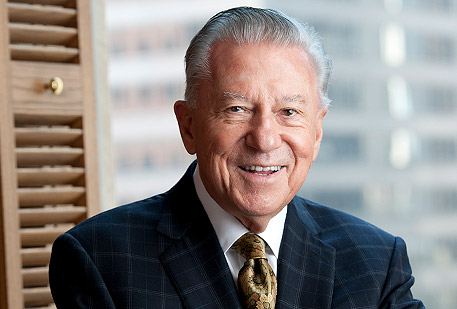Twelve requirements for building effective teams
In the uncertainties in today's global marketplace, talk in the workplace centres around the many nuances of becoming a team, the differences between teams and groups, what it takes to work as a team, and how to make the team more effective. However, few people have come to understand what it really takes to develop a great team that performs with extraordinary results. Being a part of a team that most can count on requires the right people coming together with the complementary skills and talents to achieve the desired effects of the leadership and organization.
People selected to become members of a team must be prepared to contribute to the environment and overall success of the organization. They must put their personal feelings aside and work towards a significant level of personal proficiency that translates into increased levels of professional mastery. When assigned to specific tasks, they must understand and be in tune with their situation and be unified with the heartbeat across other departments of the organization. The future picture must drive their actions and performance to do what is needed to win.
It is important to differentiate the concept of teamwork from that of a working group formed to accomplish a specific goal. Because people confuse these two, many team-building training programs, seminars, meetings, retreats, and activities are deemed failures by their participants — the facilitators normally failing to define the differences between "groups" and "teams" and the participants leaving without a comprehensive understanding of what they really need and must achieve.
The Differences between Teams and Groups
Team
A team is best described as a small group of individuals with complementary skills and abilities who are committed to a common goal and approach for which they hold each other accountable.
The best size for teams is 6 to12 individuals. Larger teams require more structure and support, while smaller teams often have difficulty meeting when members are absent. Members have skills and abilities that complement the team's purpose. Not all members have the same skills, but together they are greater than the sum of their parts.
On teams, members share roles and responsibilities and are constantly developing new skills to improve the team's performance. They work in a democratic fashion, with every voice having an opportunity to be heard. Teams identify and reach consensus on their common goal and approach rather than looking to a leader to define these. Most important, teams hold their members accountable – very accountable! What does this mean in practical terms? When they experience conflict with a member, they speak to that member directly rather than to a supervisor. When a member is not performing to the level required, the team addresses, or self-disciplines, the performance issue.
Group
A group is a small unit of people with complementary skills and abilities who are committed and willing to be held accountable to one leader’s goal and approach. A group drives individual rather than shared accountability. Decisions are made by voting or implied agreement rather than by consensus as typically made by a team.
When defining teams and groups, it is unfair to say that one is better than the other. A good question to ask is: "When is it best to develop and use a group, and when do you make the extra effort to develop a team?"
It's important to understand that groups are much easier and less complex to form than teams. Groups work best when the decisions and process are already determined, buy-in is not necessary, time is a critical factor, and there is split or minimal management support for teaming. To form a group, it is best to identify a very strong and confident, effective leader, empowered to recruit group members and formulate the goal/orientation and approach for driving decisions to be made. This approach is practical for short-term projects where the outcomes are already defined.
Teaming, on the other hand, should be used when you need a broad buy-in for the greatest level of performance output, when no one person has the answer, and when shared responsibility is important to the success of the goal and meeting objectives. To achieve a real team, and a great team, is difficult and time consuming. Great teams require such qualities as time, trust, and positive organizational behaviours. Nothing will transform a group into a team overnight. It takes an enormous amount of time, along with lessons learned from mistakes to craft the necessary skills that work well together. It also requires a comprehensive understanding of how to solve problems, challenges, and issues, and how to make the right decisions effectively.
Organizations must decide on their short- and long-term objectives before deciding on which direction they should go. And senior leadership must be prepared to ask the people involved: "What would it take to be a real, high-performance unit?" Then, as they brainstorm the answer, they must challenge the stakeholders and themselves to press onward to become the very best they can be to achieve the future picture of the organization.
Twelve Requirements for Building Effective TeamsThe focus of team building must be on improving results, not just improving relationships. The process starts by measuring how clear team members are on their purpose, vision, values, and goals, and goes on to focus on the manoeuvres, and all aspects of the team dynamics for achieving those goals.
Even if they appear to have worked in the short term, most team-building programs don't achieve anything in the long term. People cannot change their behaviour and continue with those changes from a two- or three-day training experience. Changing behaviour takes time.
No matter what you call your team-based improvement effort — continuous improvement, total quality management, lean manufacturing and Human Sigma, or self-directed work teams — you are striving to improve results for internal and external customers. However, few organizations and leaders are totally pleased with the results their team-improvement efforts produce. If your team improvement efforts are not living up to your expectations, this self-diagnosing Checklist might tell you why:
1. Clear expectationsTo be successful, there must be buy-in from the top. Has executive leadership clearly communicated its expectations for the team's performance and expected outcomes? Do team members understand why the team was created? Is the organization demonstrating consistency of purpose in supporting the team with resources of people, time, and money? Does the work of the team receive sufficient emphasis as a priority in terms of the time, discussion, attention, and interest directed its way by executive leaders?
2. ContextDo team members understand why they are participating on the team? Do they understand how the strategy of using teams helps the organization attain its communicated business goals? Can members define their team's importance to the accomplishment of goal orientation? Does the team understand where its work fits into the total context of the organization's goals, principles, posture, vision, organizational behaviour, and values?
3. CommitmentDo team members want to participate on the team? Do they feel the team mission is important? Are members committed to accomplishing the team mission and expected outcomes? Do they perceive their service as valuable to the organization and to their own careers — is there a win–win? Do team members anticipate recognition for their contributions? Do they expect their skills to grow and develop on the team? Are members excited and challenged by the team opportunity?
4. CompetenceDoes the team feel that it has the appropriate people participating? For example, in a process improvement initiative, is each step of the process represented on the team? Does the team feel that its members have the knowledge, skill, and capability to address the issues for which it was formed? If not, does the team have access to the help it needs? Does the team feel it has the resources, strategies, and support needed to accomplish its mission/objectives and future picture?
5. ContractHas the team taken its assigned area of responsibility and designed its own mission, vision, posture statement, memorandum of understanding, and strategic intent to accomplish the mission? Has the team defined and communicated its goals, its anticipated outcomes and contributions, its timelines, and how it will measure both the outcomes of its work and the process the team followed to accomplish their task? Does the organization leadership or other coordinating group support what the team has designed?
6. CooperationThis is the exercise of authority and direction by a properly designated team leader or members on a team over assigned and attached resources in the accomplishment of the organization's mission. Does the team have enough freedom and empowerment to feel the ownership necessary to accomplish its contract?
At the same time, do team members clearly understand their boundaries? How far may members go in pursuit of solutions? Are monetary and time limitations defined at the beginning of a project before the team experiences barriers and rework? Do all members of the organization understand the team's reporting relationship and accountability? Has the organization defined the team's authority to make recommendations and to implement its plan? Is there a defined review process so both the team and the organization are consistently aligned in direction and purpose? Do team members hold each other accountable for project timelines, commitments, and results? Does the organization have a plan to increase opportunities for self-management among organization members?
7. Collaboration (coalition of forces)Does the team understand team and group process? Do members understand the stages of group development? Are they working together effectively interpersonally? Do all team members understand the roles and responsibilities of individual team members and leaders? Can the team approach problem solving, process improvement, goal setting, and measurement jointly? Do members cooperate to accomplish the team contract? Has the team established group norms or rules of conduct in such areas as leader shaping, conflict resolution, consensus decision making, and meeting management? Is the team using an appropriate strategy to accomplish its action plan?
8. CommunicationAre team members clear about the priority of their tasks? Is there an established method for teams to give feedback and receive honest performance feedback? Does the organization provide important business information regularly? Do the teams understand the complete context for their existence? Do team members communicate clearly and honestly with each other? Do they bring diverse opinions to the table? Are necessary conflicts raised and addressed? Do team members understand that conflict is necessary for lessons learned?
9. Creative innovationIs the organization really interested in change? Does it understand the contextual implications for the change? Does it value creative thinking, transformational thinking, unique solutions, and new ideation? Does it reward people who take reasonable risks to make improvements or does it reward the people who fit in and maintain the status quo? Does it provide the training, education, access to publications and textual resources, performance management assessments, and infield trips necessary to stimulate new thinking?
10. ConsequencesDo team members feel responsible and accountable for team achievements? Do they feel responsible and accountable for each other? Are rewards and recognition supplied when teams are successful? Not successful? Is reasonable risk respected and encouraged in the organization? Do team members fear reprisal? Do they spend their time finger pointing rather than resolving problems during the necessary debrief sessions? Is the organization designing reward systems that recognize both team and individual performance and organizational behaviour? Is the organization planning to share gains and increased profitability with team and individual contributors? Do team members feel responsible and accountable for team and individual strategic execution tactics? Can contributors see their impact on increased organization success?
11. CoordinationAre teams coordinated by a central leadership team that helps them obtain what they need for success? Does a designated red team help teams work out problems and challenges before tackling their mission?
Have priorities and resource allocation been planned across departments? Have the proper configurations or reconfigurations been made and planned for across departments? Do teams understand the concept of the internal customer, the next process, anyone to whom they provide a product or a service? Are cross-functional and multi-department teams common and working together effectively and efficiently? Is the organization developing a customer-focused process-centred orientation and moving away from traditional departmental thinking?
12. Cultural change — collective behavioursDoes the organization recognize that the team-based, collaborative, empowering, enabling organizational culture of the future is different from the traditional, hierarchical organization it may currently be? Is the team a networked unit or hierarchical one? Is the organization planning to or in the process of changing how it rewards, recognizes, appraises, hires, develops, plans with, motivates, and manages the people it employs? Does the organization plan to use failures for learning and support reasonable risk? Does the organization recognize that the more it can change its climate to support teams, the more it will receive in pay back (ROI) from the work of the teams?
Spend time and attention on each of these 12 Cs to develop effective units to ensure your work teams contribute most effectively to your business success. In a position of leadership, your team members will respond favourably, your business will soar to new heights, and empowered people will own and be responsible for their work processes. Everyone will find their voice. Can you ask for anything better in the workplace than what is proposed here?
Interested in learning more about team building? Watch this.
Reprinted with permission of Damian D. “Skipper” Pitts, CEO, The Bison Group Corporation, Philadelphia, USA. More information on this topic is available in Skipper’s book, Building Great Teams: Charting the Path of Organizational Politics (2008, Amazon.com). Email [email protected] with questions and queries, or visit www.thebisongroup.com.
 CA-EN
CA-EN UK
UK AU
AU US
US NZ
NZ PH
PH ZA
ZA SG
SG HK
HK


